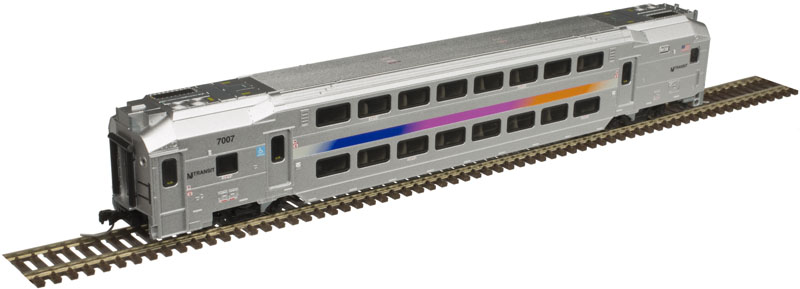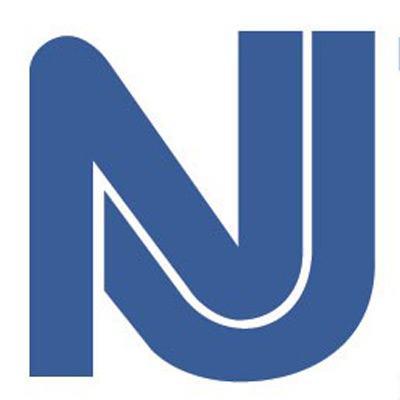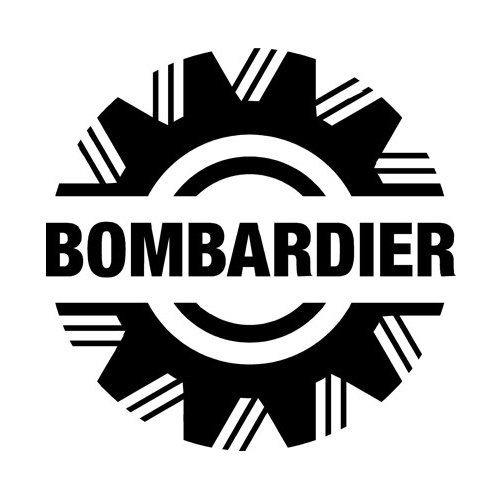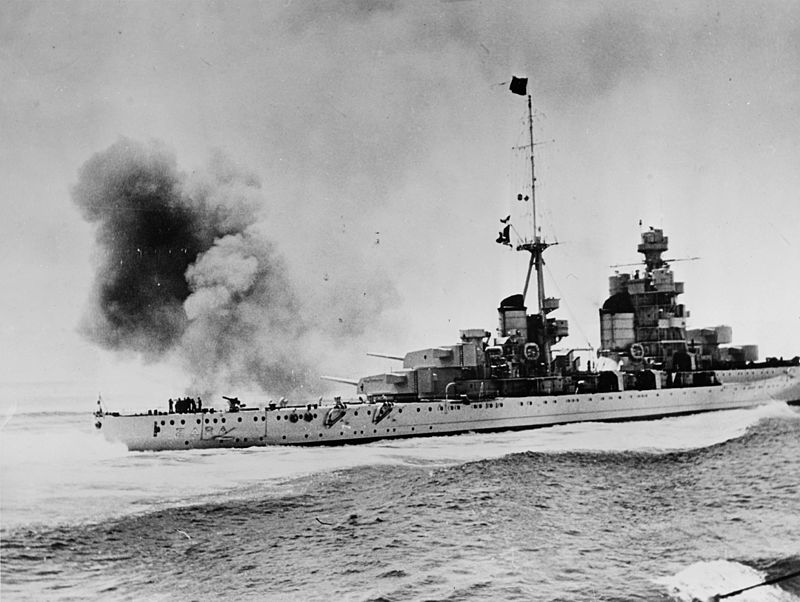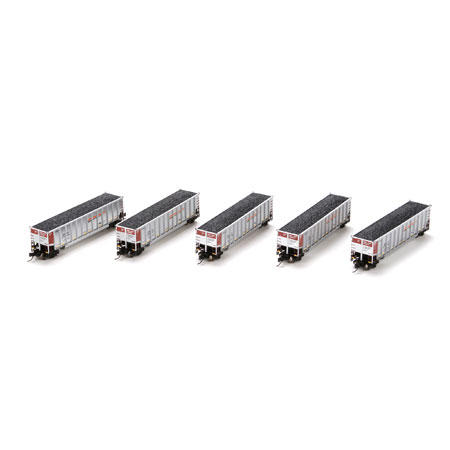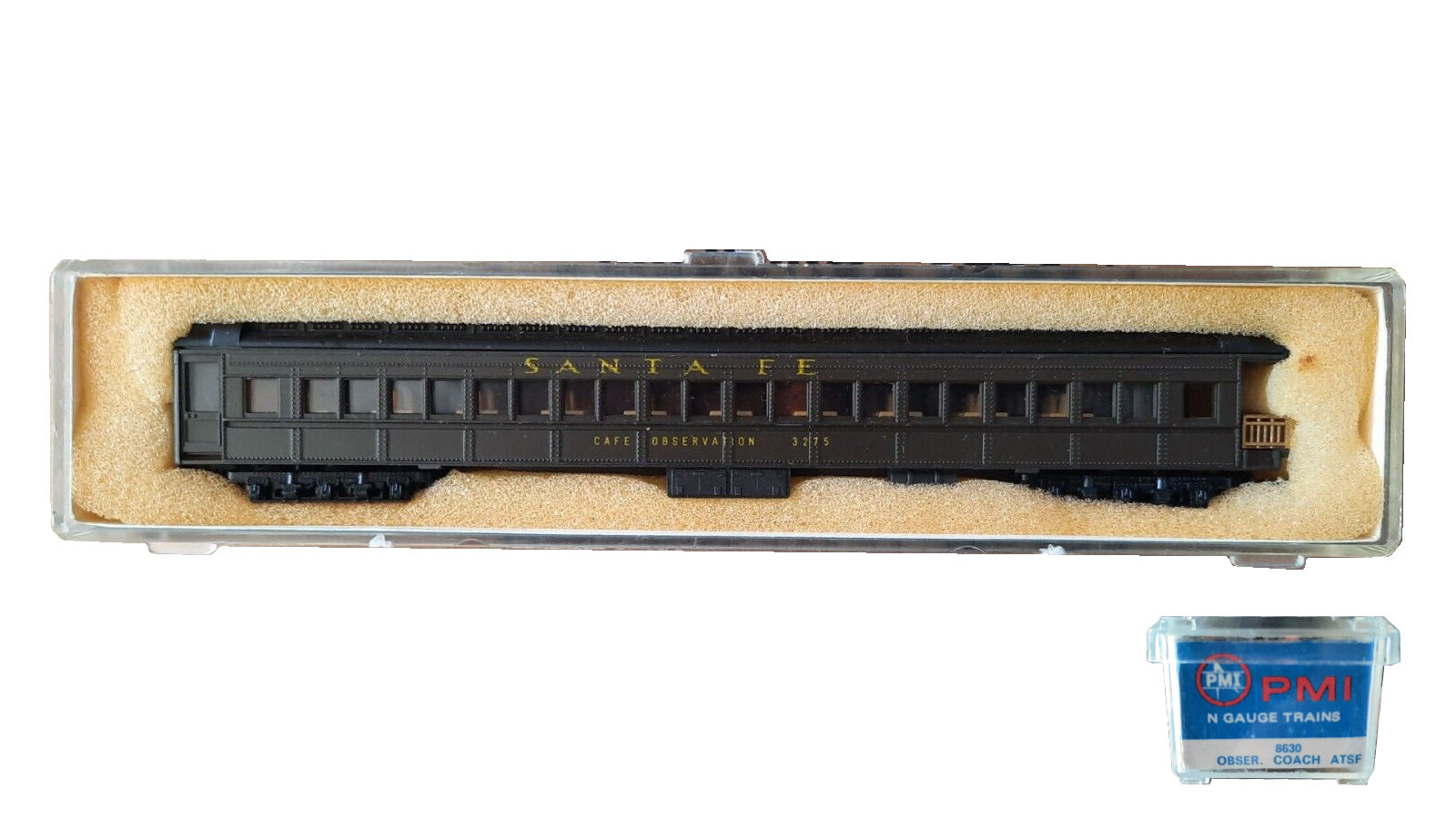Specific Item Information: Concurrent with its purchase of ALP-45DP locomotives, NJ TRANSIT also purchased 62 multi-level cab cars from Bombardier Transportation. These cab cars are used on the opposite end of the train from the ALP-45DP locomotive to facilitate "push-pull" operations, where the engineer in the cab car can control the locomotive pushing from the other end of the train. A cab car provides an engineer with all of the same controls as a locomotive cab, allowing the train to reverse direction without turning around. Cab cars also include all standard locomotive safety features, such as a horn and bell.
In addition to its multi-level cab cars, NJ TRANSIT operates an additional 367 multi-level trailer coaches without cabs. Ninety-nine of these cars include a toilet and have a passenger seating capacity of 132 commuters. The remaining 268 trailer cars do not have a toilet, and feature seating for 142 passengers. The multi-level trailer cars are always operated in matching sets (with a multi-level cab car on one end and a locomotive on the other), and these cars carry commuters over 2.2 billion miles every year.
In addition to its multi-level cab cars, NJ TRANSIT operates an additional 367 multi-level trailer coaches without cabs. Ninety-nine of these cars include a toilet and have a passenger seating capacity of 132 commuters. The remaining 268 trailer cars do not have a toilet, and feature seating for 142 passengers. The multi-level trailer cars are always operated in matching sets (with a multi-level cab car on one end and a locomotive on the other), and these cars carry commuters over 2.2 billion miles every year.
Model Information: Atlas first introduced this model in October of 2019. It is their second foray into passenger service and this model appears to be far more detailed than their earlier ACF 60 foot heavyweight models.
Prototype History: The Bombardier MultiLevel Coach is a bi-level passenger rail car manufactured by Bombardier for use on commuter rail lines. It started service in 2006 and is still being produced as of 2012.
The coaches have a two-by-two seating arrangement and more knee and leg room than single level coaches. The seats are also bigger and it has 15-30% more seating than on single level coaches. The intermediate levels have 5 inward-facing flip-up seats on each side, for wheelchairs or bicycles. On cab cars, a large equipment locker behind the cab replaces one row of seats. There are large side doors at intermediate levels, and end doors, except at the cab position on cab cars. The end doors of NJ Transit coaches have stepwell traps, allowing these doors to be used for both high and low-platform loading. AMT coaches have one-piece end doors without traps, which can be used only for low-platform loading. There are also an automated announcement system and LED destination screens.
The coaches have a two-by-two seating arrangement and more knee and leg room than single level coaches. The seats are also bigger and it has 15-30% more seating than on single level coaches. The intermediate levels have 5 inward-facing flip-up seats on each side, for wheelchairs or bicycles. On cab cars, a large equipment locker behind the cab replaces one row of seats. There are large side doors at intermediate levels, and end doors, except at the cab position on cab cars. The end doors of NJ Transit coaches have stepwell traps, allowing these doors to be used for both high and low-platform loading. AMT coaches have one-piece end doors without traps, which can be used only for low-platform loading. There are also an automated announcement system and LED destination screens.
Road Name History: New Jersey Transit Corporation, marketed as NJ Transit (NJT), is a state-owned public transportation system serving the US state of New Jersey; along with portions of New York, Orange, and Rockland counties in New York State; and Philadelphia County in Pennsylvania. It operates bus, light rail, and commuter rail services throughout the state, notably connecting to major commercial and employment centers both within the state and in the adjacent major cities of New York and Philadelphia.
Covering a service area of 5,325 square miles (13,790 km2), NJT is the largest statewide public transit system and the third largest provider of bus, rail, and light rail transit by ridership in the United States, linking major points in New Jersey, New York, and Pennsylvania.
NJT also acts as a purchasing agency for many private operators in New Jersey, with numerous private operators receiving equipment from NJT (primarily buses) for route service within the state not controlled by NJT.
Covering a service area of 5,325 square miles (13,790 km2), NJT is the largest statewide public transit system and the third largest provider of bus, rail, and light rail transit by ridership in the United States, linking major points in New Jersey, New York, and Pennsylvania.
NJT also acts as a purchasing agency for many private operators in New Jersey, with numerous private operators receiving equipment from NJT (primarily buses) for route service within the state not controlled by NJT.
Brand/Importer Information: In 1924 Stephan Schaffan, Sr. founded the Atlas Tool Company in Newark, New Jersey. In 1933 his son, Stephan Schaffan, Jr., came to work for his father at the age of sixteen. Steve Jr. built model airplanes as a hobby and frequented a local hobby shop. Being an enterprising young man, he would often ask the owner if there was anything he could do to earn some extra spending money. Tired of listening to his requests, the hobby-store owner threw some model railroad track parts his way and said, "Here, see if you can improve on this".
In those days, railroad modelers had to assemble and build everything from scratch. Steve Jr. created a "switch kit" which sold so well, that the entire family worked on them in the basement at night, while doing business as usual in the machine shop during the day.
Subsequently, Steve Jr. engineered the stapling of rail to fiber track, along with inventing the first practical rail joiner and pre-assembled turnouts and flexible track. All of these products, and more, helped to popularize model railroading and assisted in the creation of a mass-market hobby. The budding entrepreneur quickly outgrew the limitations of a basement and small garage operation. Realizing they could actually make a living selling track and related products, Steve and his father had the first factory built in Hillside, New Jersey at 413 Florence Avenue in 1947. On September 30, 1949, the Atlas Tool Company was officially incorporated as a New Jersey company.
In 1985, Steve was honored posthumously for his inventions by the Model Railroad Industry Association and was inducted into the Model Railroad Industry Hall of Fame in Baltimore, Maryland. In addition, Steve was nominated and entered into the National Model Railroad Association Pioneers of Model Railroading in 1995.
In the early 1990s, the Atlas Tool Company changed its name to Atlas Model Railroad Company, Inc.
In those days, railroad modelers had to assemble and build everything from scratch. Steve Jr. created a "switch kit" which sold so well, that the entire family worked on them in the basement at night, while doing business as usual in the machine shop during the day.
Subsequently, Steve Jr. engineered the stapling of rail to fiber track, along with inventing the first practical rail joiner and pre-assembled turnouts and flexible track. All of these products, and more, helped to popularize model railroading and assisted in the creation of a mass-market hobby. The budding entrepreneur quickly outgrew the limitations of a basement and small garage operation. Realizing they could actually make a living selling track and related products, Steve and his father had the first factory built in Hillside, New Jersey at 413 Florence Avenue in 1947. On September 30, 1949, the Atlas Tool Company was officially incorporated as a New Jersey company.
In 1985, Steve was honored posthumously for his inventions by the Model Railroad Industry Association and was inducted into the Model Railroad Industry Hall of Fame in Baltimore, Maryland. In addition, Steve was nominated and entered into the National Model Railroad Association Pioneers of Model Railroading in 1995.
In the early 1990s, the Atlas Tool Company changed its name to Atlas Model Railroad Company, Inc.
Item created by: Jenna on 2019-10-08 11:48:11
If you see errors or missing data in this entry, please feel free to log in and edit it. Anyone with a Gmail account can log in instantly.
If you see errors or missing data in this entry, please feel free to log in and edit it. Anyone with a Gmail account can log in instantly.


